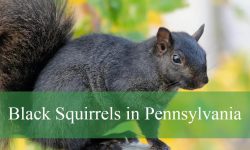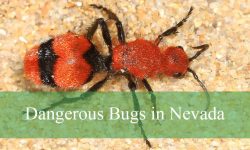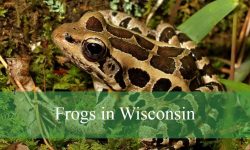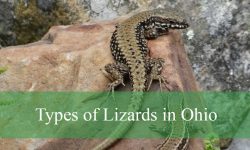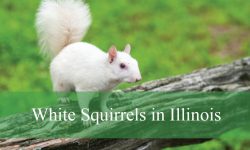When most people in Florida hear the name “water moccasin,” they immediately picture a large, dark, and dangerous snake gliding through murky swamps. Its reputation is legendary — some say it’s aggressive, others claim it will chase swimmers. But how much of that is actually true?
In reality, the Florida cottonmouth (Agkistrodon conanti) is the species most people mean when they talk about water moccasins. It’s a venomous pit viper that plays an important role in Florida’s ecosystems. Yet, misunderstanding and fear have made it one of the most misjudged reptiles in the state.
This article reveals the real facts about Florida’s water moccasins — their habits, habitats, behavior, and the myths that continue to surround them. By the end, you’ll see these snakes not as monsters, but as remarkable survivors that deserve a bit more respect.
What Exactly Is a Water Moccasin?
A Name Wrapped in Confusion
The name “water moccasin” is often used loosely. Many Floridians call any snake found near water a moccasin, whether it’s venomous or not. The truth is, the real water moccasin in Florida is the Florida cottonmouth, a venomous snake that is part of the viper family. Other water-loving species, like banded or brown water snakes, are completely harmless but frequently mistaken for it.
This confusion often leads to unnecessary fear and even killing of nonvenomous snakes. Understanding the difference is vital, especially since these harmless species help control pests and maintain ecological balance.
The Florida Cottonmouth Explained

The Florida cottonmouth is a heavy-bodied snake, usually ranging between 30 and 48 inches long. Its head is broad and triangular, with a distinct neck and cat-like vertical pupils. The inside of its mouth is pale white — hence the nickname “cottonmouth.” Young cottonmouths often have a yellowish tail they use to lure prey, while adults turn darker and may appear almost black.
They inhabit a wide variety of wet areas, including swamps, marshes, ponds, and slow-moving streams. Unlike what many people believe, they can also wander far from water, especially during cooler or rainy seasons.
Habitat and Range in Florida
The Florida cottonmouth is found throughout nearly every part of the state. It thrives in lowland habitats — from the Everglades and cypress swamps of the south to the pine flatwoods and retention ponds of the north. These snakes prefer slow-moving or still water but are adaptable enough to live near canals, lakes, and even coastal marshes.
One fascinating fact is that cottonmouths are often seen basking on logs, rocks, or along the water’s edge, where they can regulate their body temperature. Because Florida’s climate remains warm most of the year, these snakes are active year-round, though they may rest more during colder snaps.
While water is their main element, cottonmouths can move surprising distances across dry land in search of food or new territory. That’s why residents sometimes encounter them in suburban yards or golf courses near ponds.
Diet and Hunting Behavior
The Florida cottonmouth is a skilled predator and opportunistic feeder. Its diet includes frogs, fish, lizards, small mammals, birds, and even other snakes. Living near water gives it access to abundant food sources that many terrestrial snakes can’t reach.
It uses both ambush and active hunting techniques. Cottonmouths often lie still near water’s edge, waiting for unsuspecting prey to pass by. Juveniles use their yellow-tipped tails to attract small animals — a clever tactic called “caudal luring.” When prey approaches, the snake strikes quickly and injects venom to immobilize it.
Despite their fearsome appearance, cottonmouths play an important ecological role. By controlling populations of small animals and aquatic creatures, they help keep Florida’s wetlands healthy and balanced.
How Dangerous Are Water Moccasins Really?
The Florida cottonmouth is venomous, but it is not the aggressive killer many imagine. Its venom destroys tissue and can cause pain, swelling, and sometimes serious injury. Yet deaths from cottonmouth bites are exceedingly rare. Most incidents occur when people attempt to handle or kill the snake.
In general, cottonmouths prefer to avoid confrontation. When threatened, they may coil up, open their mouths wide to display the white interior, and emit a musky scent. This is a defensive warning — not an invitation to attack. If given space, they almost always retreat rather than strike.
Unfortunately, because of their reputation, many people misinterpret these warning displays as signs of aggression. In truth, cottonmouths are shy creatures that only bite as a last resort.
Common Myths About Florida’s Water Moccasins
Myth 1: They Chase People
One of the most enduring myths is that water moccasins chase swimmers or boaters. The truth is, they don’t. Most “chasing” stories come from startled snakes trying to escape toward safety, which might happen to be in the same direction as a person. Cottonmouths are defensive, not predatory, toward humans.
Myth 2: They Live Only in Water
Although they’re semi-aquatic, cottonmouths are comfortable on land as well. They may be found sunning on trails, roads, or fields after heavy rains. They can survive far from water sources, especially when following prey or seeking dry ground during floods.
Myth 3: Every Dark Snake in Water Is a Moccasin
This myth causes countless harmless snakes to be killed every year. Nonvenomous species like the banded water snake and Florida green water snake often mimic the cottonmouth’s appearance but lack venom and pose no threat. Learning the difference helps both people and wildlife stay safe.
How to Identify a Florida Cottonmouth
Unlike harmless water snakes, cottonmouths have distinct physical traits. Their bodies are thick and muscular, and their heads are noticeably broader than their necks. The eyes have vertical pupils, similar to a cat’s. When viewed from above, the eyes are partially hidden by brow ridges — a feature water snakes don’t have.
The pattern on their body usually consists of dark crossbands that may fade with age, especially in older individuals that appear nearly solid brown or black. If you ever see a snake opening its mouth wide to reveal a bright white interior, you’re likely looking at a cottonmouth’s signature defensive display.
Behavior and Reproduction
Cottonmouths are solitary by nature and spend much of their time hunting or basking alone. Mating typically occurs in spring, with females giving birth to live young in late summer or early fall. Unlike many reptiles, they don’t lay eggs — the young are born fully formed and independent.
Newborns are about eight to ten inches long and more brightly patterned than adults. Their yellow tails help them attract prey right from birth. Interestingly, female cottonmouths often give birth in protected wetland areas, such as hollow logs or dense vegetation near water.
These snakes are active both day and night but tend to hunt more at dusk or during humid evenings. During extreme heat, they rest in shaded areas or submerged vegetation to stay cool.
How to Stay Safe Around Water Moccasins
Most encounters between humans and cottonmouths happen because of surprise, not aggression. To stay safe, it’s best to remain aware of your surroundings in natural areas. When walking near lakes, rivers, or wetlands, wear closed-toe shoes and watch where you step. Avoid sticking hands into thick vegetation or under rocks and logs.
If you see a snake, give it plenty of space. Back away slowly and never attempt to handle or kill it. Snakes play a vital role in Florida’s environment and prefer to be left alone. Homeowners living near water can reduce unwanted encounters by keeping grass trimmed, removing debris piles, and avoiding feeding pets outdoors, which attracts prey animals that snakes hunt.
In the rare case of a bite, remain calm and seek medical care immediately. Do not attempt to suck out the venom or use a tourniquet — both methods can make the situation worse. Modern antivenoms are highly effective when administered quickly.
Cottonmouths and the Florida Ecosystem
The Florida cottonmouth is an essential part of the state’s natural balance. It controls populations of frogs, rodents, and fish, helping prevent overpopulation and disease spread. In turn, cottonmouths provide food for larger predators like birds of prey, alligators, and other snakes.
Healthy populations of cottonmouths indicate healthy wetlands. When people remove or destroy these snakes out of fear, it can disrupt the food web and harm other wildlife. Understanding their ecological role helps us appreciate their value, even if they aren’t the most cuddly creatures.
Conservation and Human Coexistence
Although cottonmouths are not endangered, habitat loss and human conflict pose ongoing challenges. Urban development continues to encroach on Florida’s wetlands, forcing these snakes to adapt or perish. Road traffic, drainage projects, and pollution also take their toll.
Education is key to coexistence. Many snake-removal experts and wildlife educators in Florida now focus on teaching residents to recognize and respect cottonmouths rather than destroy them. By leaving these snakes undisturbed and maintaining healthy wetland ecosystems, we can ensure they continue to thrive for generations to come.
A balanced perspective is crucial: cottonmouths can be dangerous if provoked, but they are not villains. They are simply wild animals trying to survive in a rapidly changing environment.
Interesting Facts About Florida’s Cottonmouths
Few people know that cottonmouths are strong swimmers and can even tolerate brackish water near coastal marshes. They’ve been spotted crossing saltwater channels between small islands. Their ability to adapt to different environments is one reason they remain widespread across Florida.
Another surprising fact is that they have a specialized heat-sensing pit between their eyes and nostrils, allowing them to detect warm-blooded prey even in the dark. This adaptation makes them excellent nocturnal hunters.
Cottonmouths can also live surprisingly long lives in the wild — up to 10 years or more. Despite this, most die young due to predators, road mortality, or human encounters.
Myths vs. Reality: What You Should Remember
Many fears about water moccasins are rooted in myths. They don’t chase swimmers, they’re not lurking in every pond, and they don’t strike without warning. The reality is far less dramatic but far more fascinating.
These snakes are part of Florida’s wild identity. They’ve been around long before people settled the state, and their presence reminds us that true wilderness still exists, even in the most developed areas. Instead of fear, a bit of understanding goes a long way toward coexistence.
If you spot one in your yard or while kayaking through the Everglades, take a moment to appreciate it from a distance. You’re witnessing a living piece of Florida’s natural history.
Conclusion
The truth about water moccasins in Florida is simple: they are not the ruthless killers people imagine. They are cautious, reclusive, and vital to their ecosystems. Their bad reputation comes more from misunderstanding than from behavior.
By learning the facts, Floridians and visitors alike can replace fear with respect. Remember that every swamp, pond, and canal is part of a living network — and the cottonmouth plays an important role in keeping that network balanced.
The next time you see one gliding through a quiet marsh, don’t panic. Step back, observe, and remind yourself that you’re looking at one of Florida’s most misunderstood yet extraordinary creatures.

